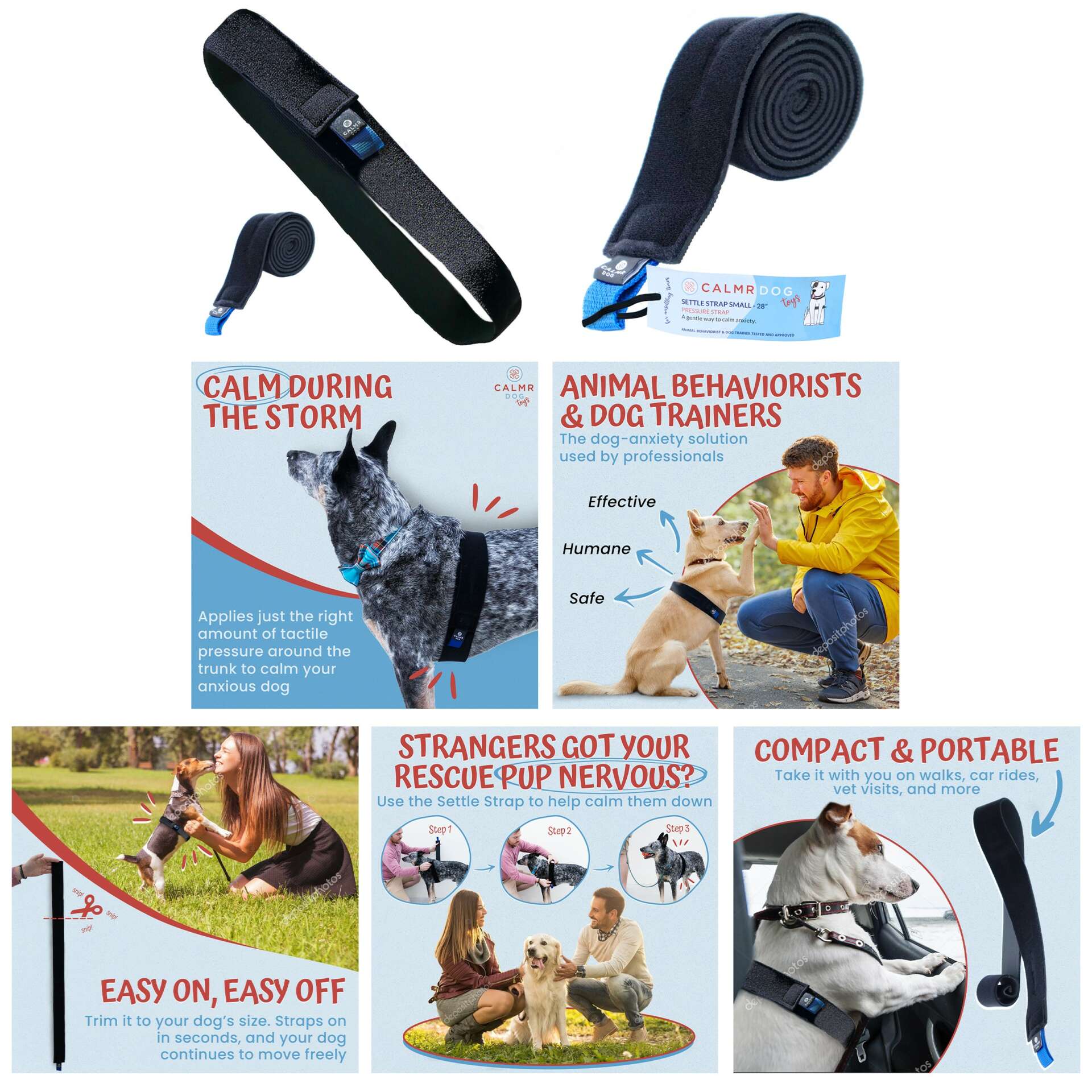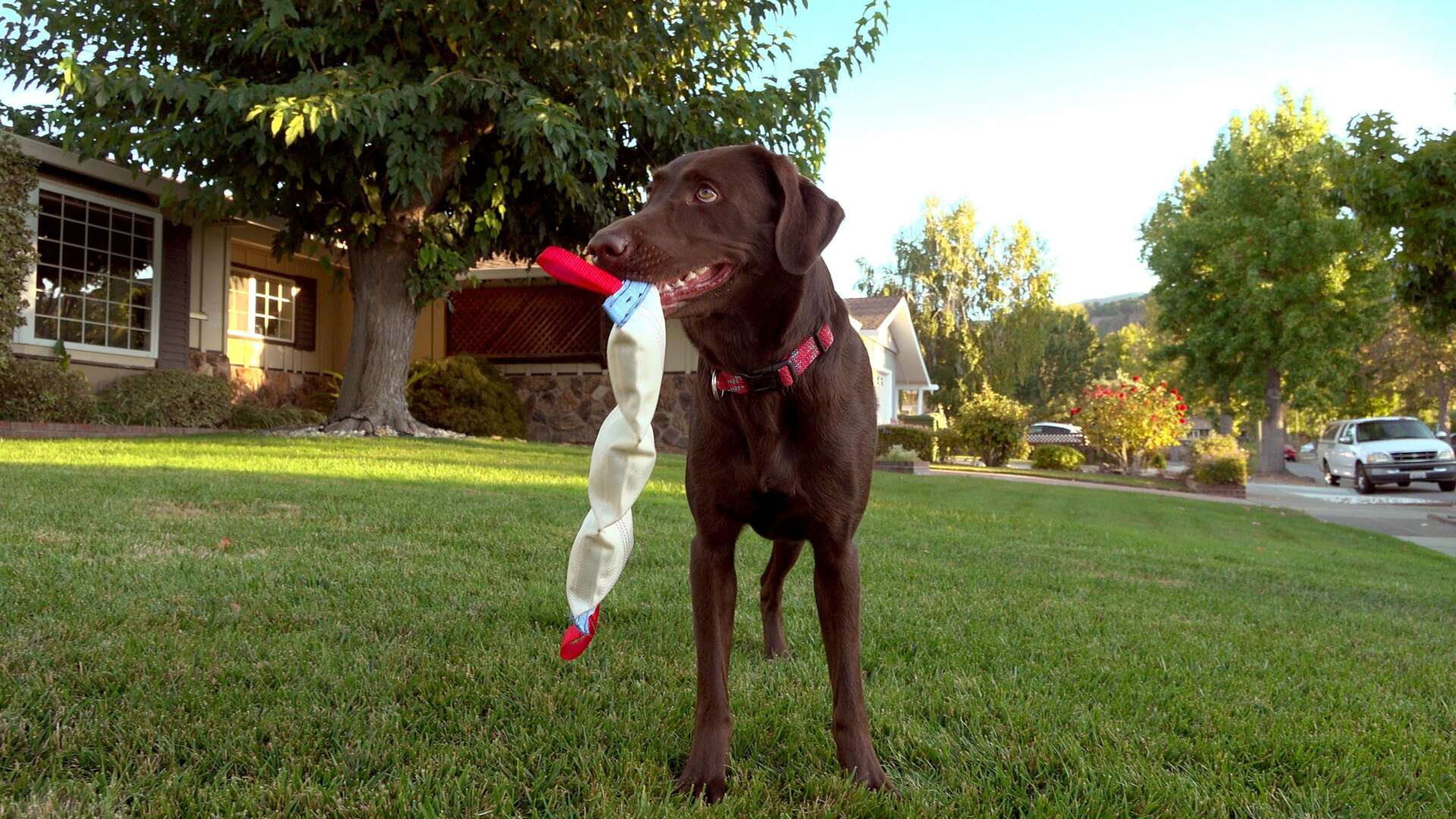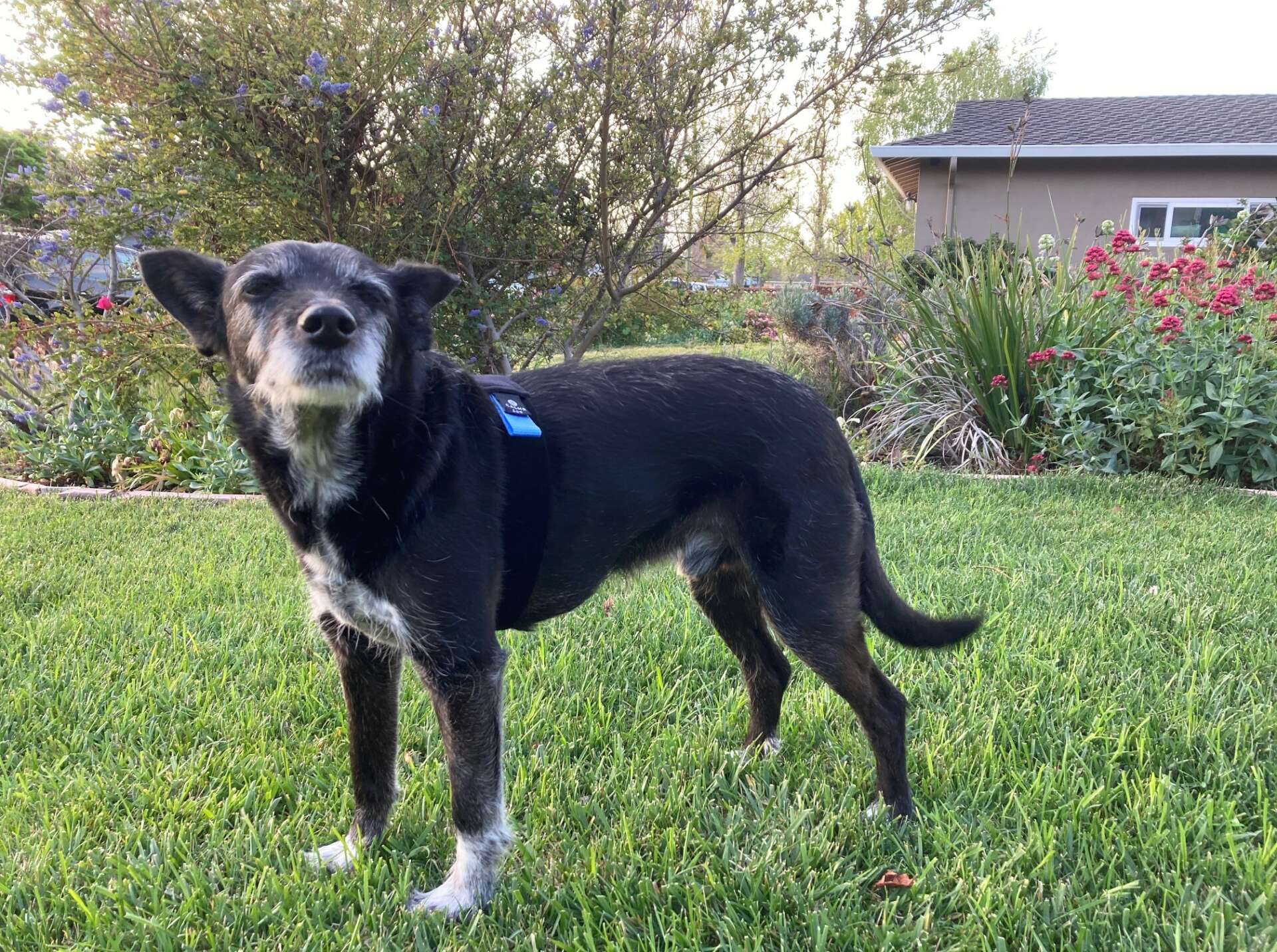We caught up with the brilliant and insightful Mary Beth Evans a few weeks ago and have shared our conversation below.
Alright, Mary Beth thanks for taking the time to share your stories and insights with us today. One of the things we most admire about small businesses is their ability to diverge from the corporate/industry standard. Is there something that you or your brand do that differs from the industry standard? We’d love to hear about it as well as any stories you might have that illustrate how or why this difference matters.
Thank you for having me! Yes, our small business does a few things differently compared to the industry standard. As the founder, I had no previous background in the dog toy business. I was, and still am an Occupational Therapist in the school based setting, treating students with sensory processing delays such as Autism and Down’s Syndrome. I have applied the science of Occupational Therapy across-species to canines for improving behavior. Thus, there are quite a few differences in how our small business views challenging behaviors in companion dogs. At the time of inspiration I was just a typical dog owner, frustrated with my high energy, goofy dog! However, what I knew intimately was how to help students who also struggle in a sensory deprived state due to an inhibited nervous system. I applied the same principles I use with students to my struggling pup and the result was amazing! My dog already had a healthy nervous system, so it was easy for him to calm once he had access to the proper quality, intensity and duration of sensory-motor input needed for self-regulation. I just needed to give him the enriched toy and get out of the way….he took it from there.
There is a bit of an explanation needed for better understanding of what makes Calmr Dog Toys special. Currently, animal behavior research and strategies are based on the 5 typical sensory systems we all know about: smell, vision, hearing, taste and touch. However, there are actually 8! Two of these misunderstood senses directly impact behavior, the movement sense and the muscle sense. These sensory systems drive the observable behaviors we see in our dogs when they are running, jumping, pulling and so on. Currently, consideration of the movement and muscle sense are virtually absent in the literature relating to animal behavior and training. In realizing this, I felt I could offer dog professionals and owners added understanding of what an animal’s nervous system needs to feel calm and happy, all through play!
Our toys are much different compared to the fluff filled or rubber toys currently available to owners. The difference is that Calmr Dog Toys are weighted (1lb.+) and flexible which activates the inner drive in most dogs to shake and romp. Our patented technology is the only pet product available offering this combination of weight and flexibility. When the dog feels the resistance from the toy in a backbone array, they are stimulated to display natural behaviors. Participation in these behaviors releases feel-good hormones which combats stress and boredom, thus improving behavior. This mechanism creates a profound and noticeable calm, improving well-being and quality of life for the pet and for the whole family.
An additional difference in our product line is our innovative pressure strap, the Settle-Strap. A strategy that is proven in both animal behavior and Pediatric Occupational Therapy is that deep pressure is calming for the nervous system. There are many anxiety pressure vests for dogs and cats currently in the pet product space. These garments impose maximum coverage, creating compression along the length of the animal. This can be overwhelming for the animal, activating their sympathetic nervous system. Movement is restricted by so much of the animal being covered, making them hot. The improvement offered by Calmr Dog is that modulating the deep tactile sense for calm does not require maximum coverage of surface area.The goal is to meet the threshold for deep touch. This can be easily achieved by a more focused approach from the 2” wide Settle-Strap. This compression strap fits snugly around the trunk, behind the front legs, not overwhelming the animal. In this way, dogs may wear the Settle-Strap on walks to soften pulling and be less aggressive.
Pulling from my Occupational Therapy roots, to realize healthy change in students and canines, strategies need to be implemented as part of their daily routine in a fun and enjoyable manner to make positive changes in the brain. I created the Calmr Dog Challenge Behavior Tracking Program – This therapeutic play program has been developed for families of active dogs so they may be proactive, not reactive, in handling their pet. This keeps the bond and trust intact. Families are supported in achieving improved behavior by addressing the origin of many dog behavior problems, boredom, and unmet play drive. This program will lessen the need for using more harsh methods to curb behavior such as edibles, prong collars, e-collars or banishment and isolation due to being too difficult to walk or take out into the community. This tracking sheet provides a pre and post test which the family will use to track progress. The recommendation is to play with their dog using the Calmr Toys for up to 10 minutes, 2x per day, for 14 days They are then asked to submit their completed tracking sheets to support ongoing research.


Mary Beth, love having you share your insights with us. Before we ask you more questions, maybe you can take a moment to introduce yourself to our readers who might have missed our earlier conversations?
I have had animals my whole life, large and small. I have never outgrown that feeling of being an 8 year old girl who loves horses. As an Occupational Therapist (OT) I have been trained to evaluate and address both physical and environmental areas of need for individuals experiencing dysfunction. The goal of all OTs is to improve participation and independence for quality of life in those they are treating. I have spent most of my career working with students with sensory processing disorders such as Autism and Down’s Syndrome. Sensory processing disorders occur when the individual has difficulty registering adequate sensory information from their body to their nervous system. This neurological condition affects how sensations are experienced and processed. The individual’s daily functioning is disrupted when sensory signals are not sufficient to be organized into appropriate responses or behaviors.
My inspiration for Calmr Dog came in a flash and I can still remember the moment. I would spend my days with students organizing their nervous system by giving them nourishing sensory input of movement, muscle work and deep touch needed for them to remain calm and attentive when in school. This is physical work which I love. However, one day, I get home from work and all I want to do is sit and read the paper for a bit. I look over and my dog Buddy is out of his mind, doing unspeakable things to his dog bed and shaking the heck out of a fluff filled toy! He had spent all day home alone, bored, and inactive. That was my ah-ha moment! It dawned on me that I needed to organize Buddy’s nervous system like I do for the students I work with. He had been in a sensory deprived state all day and is now actively trying to make himself feel better by being super annoying and crazy! The nervous system will not be denied! I got up right then and grabbed a few rocks out of the garden and sewed them into his fluff-filled toy. The result was a beautiful thing to watch. Buddy picked up the toy and immediately his posture and demeanor changed, head erect, ears forward, prancing around with his new found treasure. He gave a little head shake, coming over to show me his great find. In my experience as an OT I knew to not interfere with this bliss. This is when the magic is happening. He was experiencing the nourishing sensory input that is healthy for the brain. He cruised around for a few moments enjoying these sensations, then I kid you not… he went and laid down, calm and contended. My mind was blown and my life was changed forever. The beautiful thing about using sensory organizing strategies for animals is that they already have a healthy, intact nervous system. We just need to offer them safe, nourishing opportunities to access sensory input they crave to be the calm dogs we love.
I spent the next few years learning all I could regarding animal behavior and realizing I had additional insight into this problem that could help struggling dogs and their families. Being I am not a professional in this area of animal behavior I attended behavior conferences and reached out to others in the field to get their opinions and test my hypothesis. I was highly encouraged when I wrote to Dr. Peter Borchel who had written extensively on canine aggression. In his response back to me he stated, “I wish I had thought of that.” That was a moment I will never forget.
His comment gave me the thrust to keep pushing towards the goal of creating a line of dog toys that could safely meet the needs of these struggling dogs. I spent the next 5 years working on the problem of creating a safe toy that integrates heavy work and activates movement as well as filing and receiving our patents.
As an Occupational Therapist, evidenced based practice is crucial for providing effective care to clients. The same is true for animal behavior. I felt it important to create a study proving the efficacy of my sensory-motor based self-regulation strategies as applied to canines. In this process I came to know Dr. Elizabeth Congdon and Dr. Jessica Owens who embraced the challenge of creating a study at a no-kill animal shelter. The goal was to prove the long-stay dogs, dogs that get adopted then returned, would have an improved adoption rate after interacting with the toys to calm problem behaviors of heightened arousal, poor attention, impulsiveness, and difficulty settling down. Finally, after multiple pilot studies, the shelter study has proven to be statistically significant in decreasing stress in canines.
Currently our product line displays 5 toys of which offer multiple different mouth feels and weights based on the size of the dog and their play preferences. Additionally, we have the Settle-Strap for those anxious times in a dog’s life.
What problems does your small business solve?
By meeting big play-drive needs of active dogs, frustration of dog and family are decreased, improving safety and well-being for all. This can be a challenge for dog owners who work long days, live in small homes or in climates of extreme hot or cold. Calmr Dog toys meet the pets play-drive quickly and efficiently even in small spaces.
What sets you apart from others?
Being an Occupational Therapist, I am uniquely positioned to understand how the nervous system impacts functional behavior and how to apply that knowledge for positive gains. Dog owners and professionals spend a dreadful amount of time trying to teach their dog’s when they are not primed for success or ready to learn. In typical dog training, a top-down approach is used in which the dog is expected to use higher order functioning of the cortex to control themselves and behave. This approach places expectations on the dog that they will have the impulse control to sit, attend and be good. The dog will try their best and be successful for a while, but if their sensory-motor needs have not been addressed it will be very stressful for the dog and they will not be able to sustain it. Using a bottom-up approach of addressing sub-cortical sensory needs prior to expectations being placed, the animal will be better able to attend to what is being asked. If the dog owner does not want the dog to pull while walking on the leash, ideally, they would help the dog by preloading the nervous system with enriching Calmr Play prior to taking them out for a walk. Having the foundational movement and muscle sense threshold met prior to expectations being placed, puts the dog in an optimal state of arousal to listen and perform. If not, the dog will be compelled to meet the need for sensory input themselves by pulling too hard and being impulsive. In overlooking the need for sensory-motor based play, we find ourselves dealing with behavior problems and frustration which could have been avoided. Priming the animal with enriched play, pet people can better regulate their dog’s nervous system, setting them up for success in the kindest way possible, through play!
What are you most proud of?
Calming dogs in the kindest way possible
The future ability to keep as many pets as possible in their homes and out of shelters
What do you want potential clients to know?
All dogs would do good if they could!



Can you tell us about what’s worked well for you in terms of growing your clientele?
Promoting new products and behavior strategies for dogs in the pet industry is challenging. The feeling is that many of these professionals have seen all that is new in the industry or they need to see huge sales prior to talking to us. The key for Calmr Dog has been partnering with professionals in the animal behavior space. We started attending animal behavior and professional dog training conferences. Traction came slowly. Giving pet professionals the opportunity to handle the toy, feeling the difference and playing with the toy allowed them to observe the blissful calm happening in their own dogs. They were then compelled to share this knowledge with others as a kind solution to tough behavior problems of overly excitable and anxious dogs. Additionally, these pet professionals could appreciate addressing the problem from a different perspective. What we could collectively agree on was that the nervous systems of all animals are very similar and applying strategies across-species has potential benefits. This is a new trend in medical and veterinary science. For our products, getting the toys into the hands of leaders in the business makes all the difference. The weight and build of the toy is remarkable and makes the following conversations much easier.
What do you think helped you build your reputation within your market?
We are still a new company, refining our message and testing the market place. That is why our first pet product trade show last year was so mind blowing. With much apprehension, we decided to attend the largest international show on the East Coast. We are bootstrapping this business so money is tight. My burning question was, what was I going to offer these big-wigs as swag that would not end up in the trash and be a huge waste of money? At that time the Settle-Strap was going well but being that anxiety reducing pressure garments were already a product category, we were more focused on showcasing the dog toys. The Settle-Strap is lightweight and compact and if I smashed down enough, could fit easily in luggage. So, I got started sewing. The idea was to give away the Settle-Strap as swag if the attendee displayed interest in the toy pitch. The response for the toys was great. When people held the toy they got it right away. Many remarked they were glad not to see the same old stuff. But multiple times before I could offer, they would point behind us to the Settle-Strap and ask “what is that?” People loved the Settle-Strap! They understood the concept right away being it was already an industry standard. They were excited about the elegant simplicity and that it could potentially be an industry disrupter. We had built a better mousetrap! Once home from the conference we pivoted to championing the Settle-Strap to gain name recognition within the pet product category. Hoping the excitement about the toys would follow.
Much more hard work to come and we are looking forward to it. We are doing it for the dogs!
Contact Info:
- Website: Calmrdog.com
- Other: [email protected]


